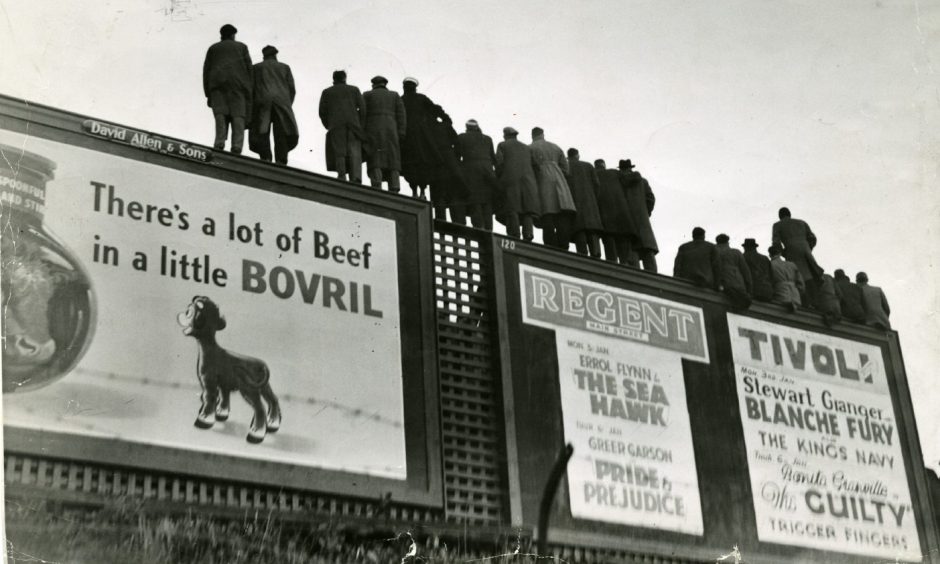
The record crowd for a match at Dens Park was officially 43,024 when Dundee played Rangers in the Scottish Cup in 1953.
However, the stats were more impressive during a league match between the sides in 1949 when the army’s infantry training was responsible for a “peacetime invasion”.
Some suggest the crowd was over 50,000.
The storming of Dens Park is among the anecdotes Steve Finan will deliver during a series of five lectures on the subject of The Evolution of Scottish Football Grounds.
“The official Dens Park biggest-ever crowd is greatly inaccurate, and part of the reason for this is the training given by the British Army,” he said.
“The league match against the same opponents on January 3 1949 had several thousand more people in the ground.
“Dundee and Rangers were vying for the championship that season and interest in this game had gripped Scotland. Several extra special trains from Glasgow were put on.
“The official crowd was 39,975, but with the turnstiles closed long before kick-off, and many thousands still milling around outside, the natural NCOs among them (all men would have served in the war or on National Service) organised a ‘rush’ on the big exit gates at the Dens Road/Provost Road corner.
“The gate locks were breached and several thousand got in that way.
“However, the walls at Dens, with a row of barbed wire along the top, were exactly the type of obstacle all these men with military experience were trained to overcome.
“And with thousands of them home on leave over Christmas/New Year, that’s exactly what they did.
“On all sides of the ground men took off their great coats to use as mats to negate the barbs and organised themselves into platoon-sized groups to get over the walls.
“The crowd was so densely packed that some, whether they had managed to get in by fair means or foul, couldn’t push their way over the brim and were left on the Derry steps or at other points around the periphery, unable to see.
“At least 5,000 had no choice but to go home – and missed a glorious 3-1 Dundee win that put the team top of the league.”
When the Tannadice pitch moved 12 yards
The Courier and Evening Telegraph columnist is the author of 14 books about sports nostalgia including Lifted Over The Turnstiles, which became a best-seller in Scotland.
Steve’s two-hour lectures will take place on five consecutive Monday evenings at Dundee University, starting on January 22, and are run by Lifelong Learning Dundee.
Have you ever wondered why the famous Shed end at Tannadice doesn’t actually line up with the pitch?
It is because the Shed roof was built in 1957 but the pitch was moved 12 yards north in 1962 to make room on the south side of the ground for the new cantilevered stand.
This left the south side of the Shed behind.
This is also why the “cliff” terrace on Sandeman Street was so steep.
Steve said: “With front-to-back space limited, the height of one stair in comparison to another increased from six inches to a new height of nine inches.
“The steepness might be regarded as dangerous in today’s health and safety-conscious world, but proved greatly popular with the punters on the terracing.
“It meant shorter blokes could more easily see above the heads of taller fellow fans.
“The only problem came at the corners, which, because of the position of the new terrace at Tannadice, had to bite into the newly-shaped and quite cramped space and created what would become the famous “Skol corners”, named for the beer adverts that adorned them for many years.
“One of them can still be seen at the corner of the George Fox/Carling stand corner.
“In pre-mobile phone times these were the meeting places at Tannadice.
“The old terrace was, unusually for any football ground in Scotland at the time, constructed of individual blocks.
“These had, over time, deteriorated badly and become loose. It wasn’t unusual for youngsters to stand on these to amuse themselves by “shoogling” them during the less exciting passages of play.”
Football grounds were modelled on places like Lord’s and The Oval
But football grounds had to change.
After the Bradford fire in 1985 and the Hillsborough disaster of 1989, health and safety laws came in to make grounds all-seated.
“No one could argue,” said Steve.
“No one should go to a football match and lose their life.
“That doesn’t mean we can’t look back fondly upon the terraces we stood on, exalted and wept upon, in the heady days of youth.
“The history of football grounds is a social thing as well as a sporting thing.
“So they all changed, and that’s what I will go through in these lectures.
When football was gaining popularity in the second half of the 19th Century, it soon occurred to people arranging games that they could charge spectators to watch.”
“From the early days of pavilions and ash and rubble terraces, to the modern-day stands. I’ll talk about virtually every ground in Scotland.
“I won’t always be complimentary, I must say. Some changes have, I think, changed football for the worse.
“And some old grounds weren’t really great examples of a place to watch sport.
“But some were fantastic.
“Many had real character, and were genuinely wonderful places to visit.
“Although, let’s not sugar-coat it, also dangerous places – on several levels.”
How did all this come about?
Football grounds, even Steve would admit, aren’t often the subject of lectures.
“Yes, I think I’m a bit of an experiment for Lifelong Learning Dundee,” he said.
“Their other courses sound a bit more ‘brainy’ than my subject.
“I’m rather proud, though also a trifle daunted, to have been asked to contribute.”
So what might attendees expect from Steve’s lectures?
He explains: “When football was gaining popularity in the second half of the 19th Century, it soon occurred to people arranging games that they could charge spectators to watch.
“But how?
“The models were cricket grounds.
“Places like Lord’s and The Oval in London were already established and much of the inspiration, and early problem-solving were copied.
“The raising of banks was important so that people three or four-deep could see.
“A barrier to keep them off the playing area – and in some advanced places a cover was added to shield them from the weather.”
Remembering the undisputed godfather of stadium design
And grounds grew from there.
Then came properly planned grounds.
Steve will celebrate the work of Archibald Leitch, who designed many of the great old grounds like Goodison Park, and who provided the plan to build Dens Park.
“There is an architectural beauty to Dens that I don’t think even Dundee supporters appreciate often enough,” he said.
“Because the lectures take place in Dundee, I’ll give a good amount of time to the evolution of Dens Park, Tannadice, Muirton, Gayfield and the wind-blown travails of Station Park, Forfar.
“All of these grounds have great stories.
“Every ground had to be different because the places where they were built were all different.
“Stark’s Park, in Kirkcaldy, for example, is almost impossibly squeezed between the railway and Pratt Street.
“If you sought planning permission these days for sporting venues in their current positions you’d have no chance!”
- Tickets, through Eventbrite, cost £50 for all five lectures and £40 for concessions.
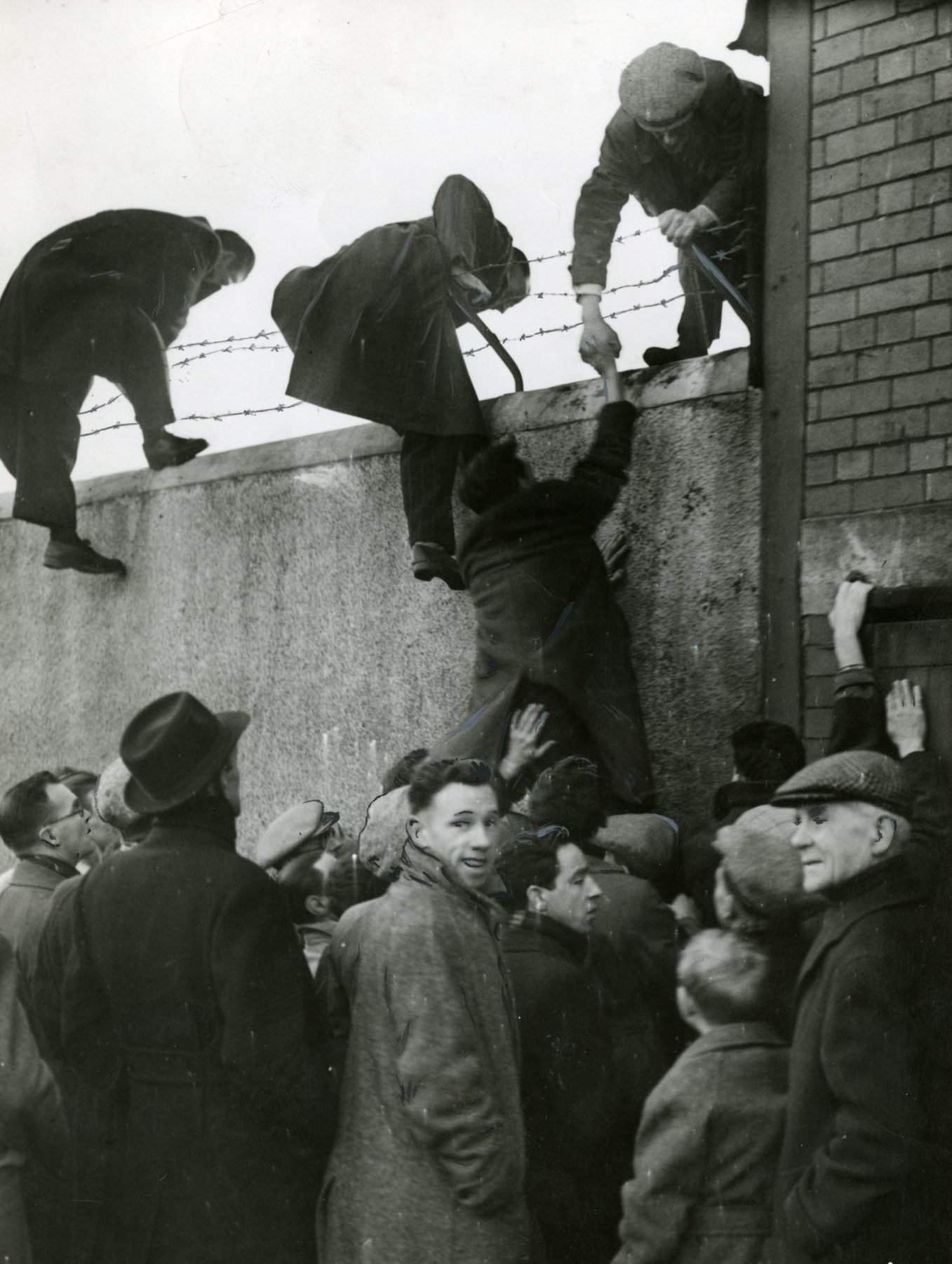
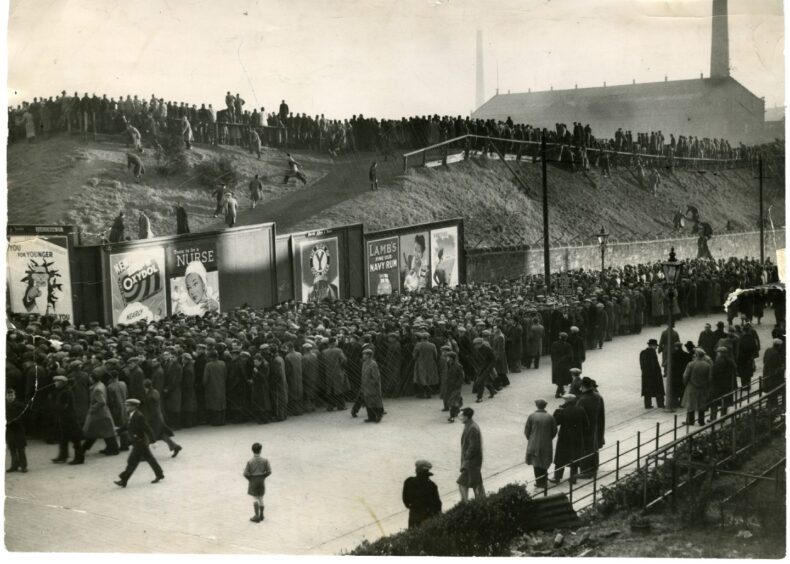
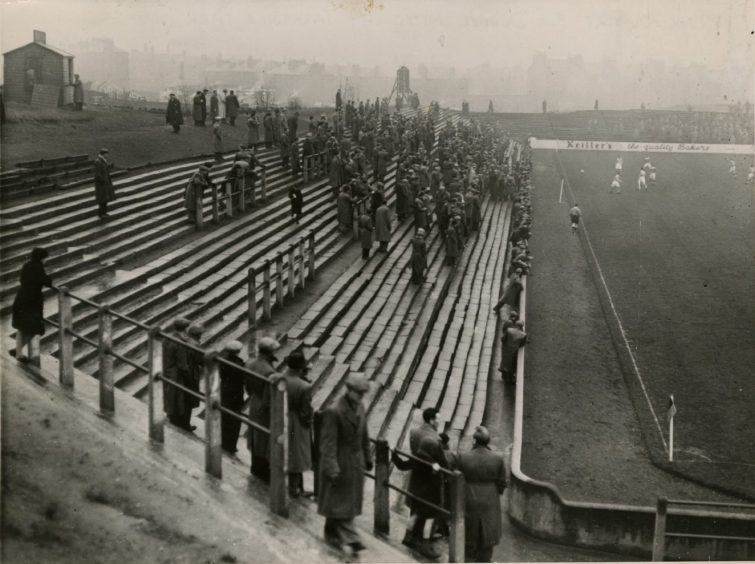
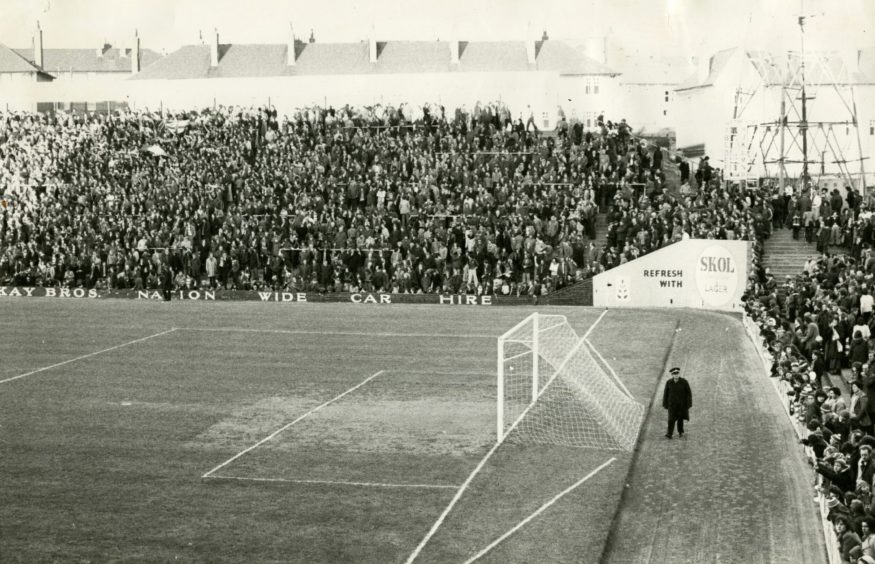
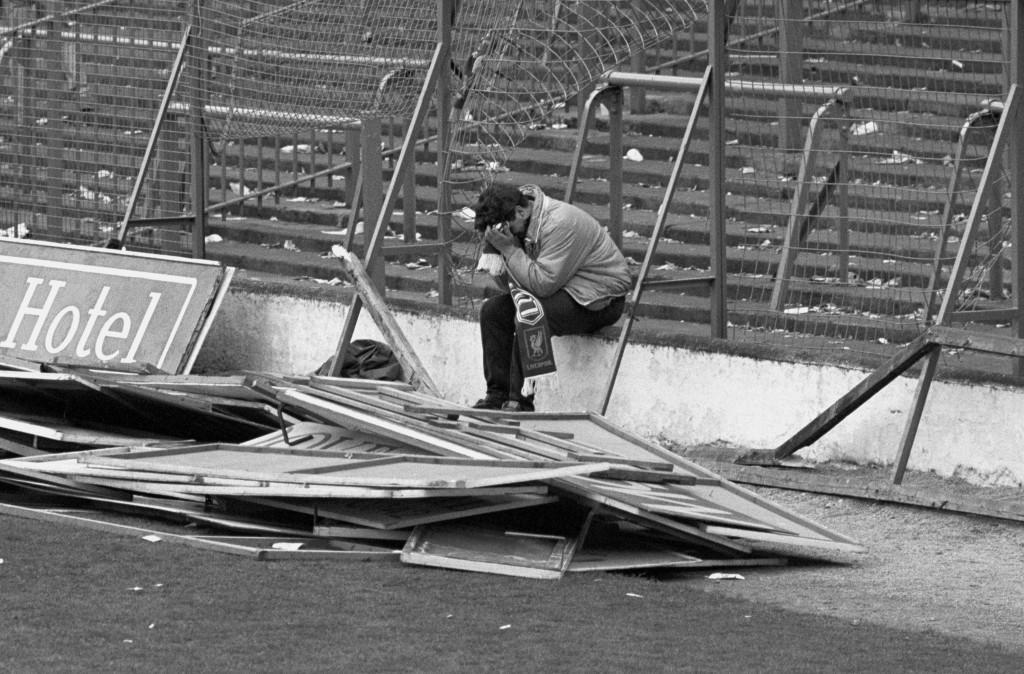
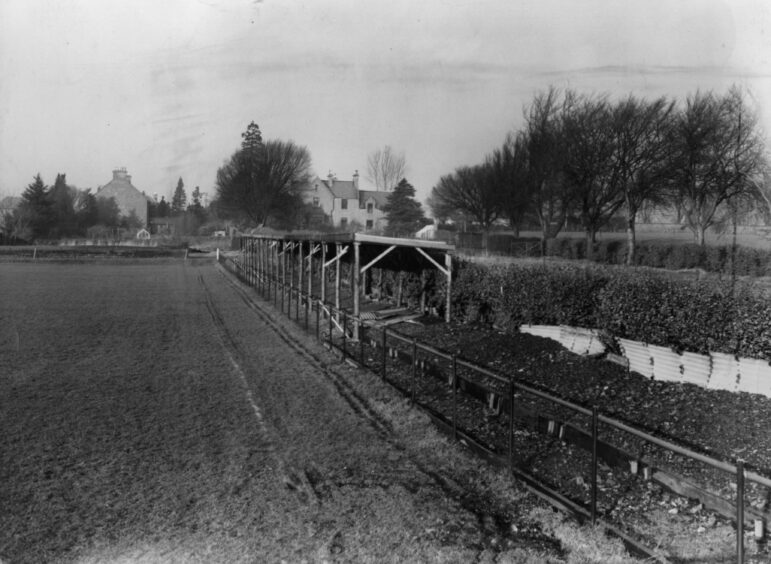
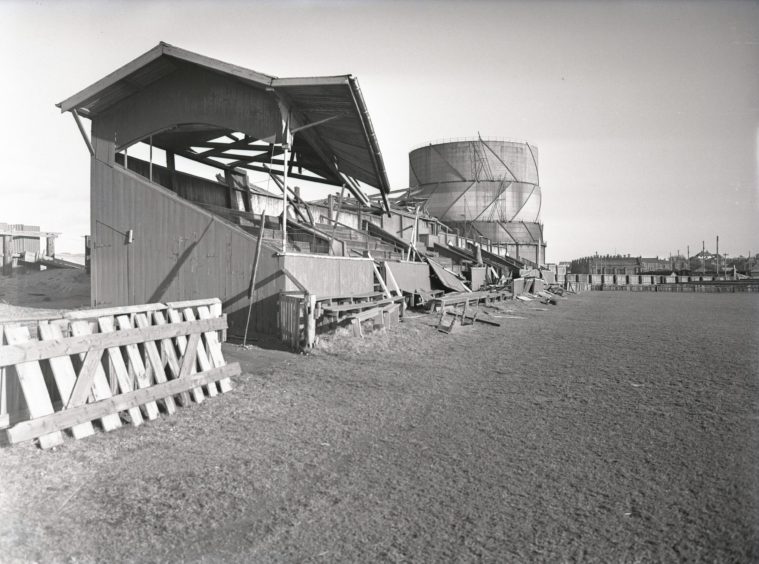
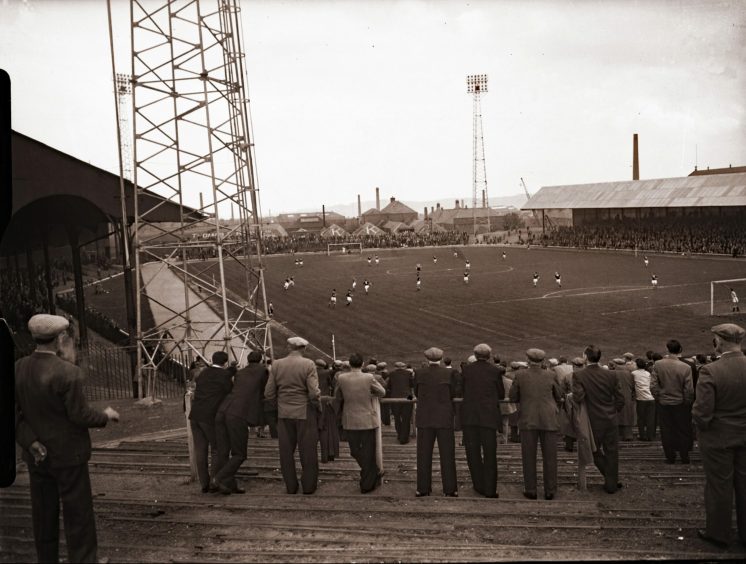











Conversation